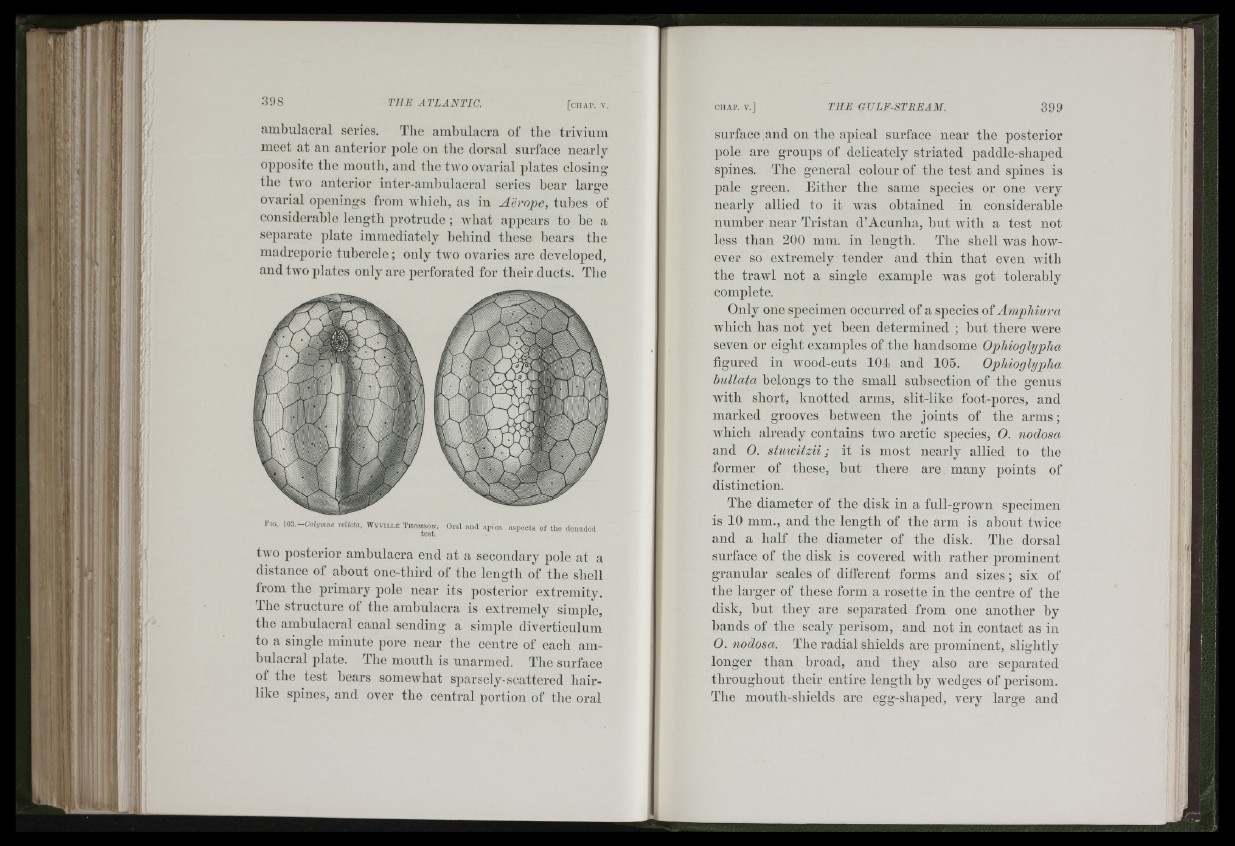
I
lit
ambulacral series. The ambulacra of the trivium
meet at an anterior pole on the dorsal surface nearly
opposite the mouth, and the two ovarial plates closing
the two anterior inter-amlmlacral series bear large
ovarial openings from Avhich, as in Aerope, tuhes of
considerable length protrude ; Avhat appears to he a
separate plate immediately behind these hears the
madreporic tubercle; only two ovaries are developed,
and tAvo plates only are perforated for their ducts. The
T i g. 103. 6‘rt?y»ine rc iic ia , W y v i l l e T h o m s o n . Oral a n d a p ic a a s p e c ts o f th e d e n u d e d
te s t.
tAvo posterior ambulacra end at a secondary pole at a
distance of ahout one-third of the length of the shell
from the primary pole near its posterior extremity.
The structure of the ambulacra is extremely simple,
the ambulacral canal sending a simple diverticulum
to a single minute pore near tlie centre of each am-
hulacral plate. The mouth is unarmed. The surface
of the test hears someAvhat sparsely-scattered hairlike
spines, and over the central portion of the oral
surface and on the apical surface near the posterior
pole are groups of delicately striated paddle-shaped
spines. The general colour of the test and spines is
pale green. Either the same species or one very
nearly allied to it Avas obtained in considerable
number near Tristan d’Acunha, hut Avith a test not
less than 200 mm. in length. The shell aaas Iioav-
ever so extremely tender and thin that even AA'ith
the traAvl not a single example Avas got tolerably
complete.
Only one specimen occurred of a species of Amphiura
which has not yet heen determined ; hut there were
seA'en or eight examples of the handsome Ophioglypha
figured in wood-cuts 104 and 105. Ophioglypha
hullala belongs to the small subsection of the genus
with short, knotted arms, slit-like foot-pores, and
marked grooves betAveen the joints of the arms;
Avhich already contains tAvo arctic species, O. nodosa
and O. sluwilzii; it is most nearly allied to the
former of these, but there are many points of
distinction.
The diameter of the disk in a fnll-groAvn specimen
is 10 mm., and the length of the arm is ahout tAvice
and a half the diameter of the disk. The dorsal
surface of the disk is covered AA'ith rather prominent
granular scales of different forms and sizes; six of
the larger of these form a rosette in the centre of the
disk, hut they are separated from one another hy
hands of the scaly perisom, and not in contact as in
O. nodosa. The radial shields are prominent, slightly
longer than broad, and they also are separated
throughout their entire length by wedges of perisom.
The mouth-shields are egg-shaped, very large and